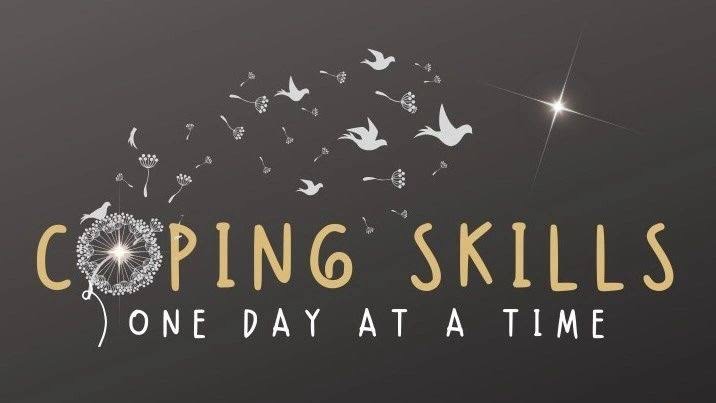We all experience a wide array of feelings as adults, but chances are that when we experienced similar emotions as children, we were not taught how to cope with or respond to them. Children should be taught how to deal with their emotions and stressful situations appropriately, to avoid turning to unhealthy coping strategies such as alcohol, food, painful stimuli as they grow older.
WHAT DOES STRESS MEAN TO CHILDREN?
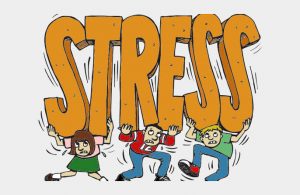 First of all, what is stress?
First of all, what is stress?
Stress is defined relative to the extent to which an individual feels overwhelmed, or unable to cope. It is caused by any type of change that causes physical, emotional, or psychological strain. Stress is a normal part of life, and can be a response to positive changes in a child’s life, but it is more commonly associated to negative changes such as parental separation or divorce, death in a family, etc. An overload of events requiring that a child changes or adapts to new or different situations can affect the way the child acts, feels and thinks, for a very long time.
Examples of stressors for children include:
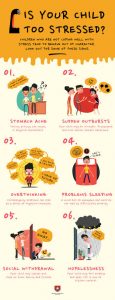 Some of the symptoms to look out for if you are concerned your child might be stressed include:
Some of the symptoms to look out for if you are concerned your child might be stressed include:
STRESS IN DIFFERENT AGE GROUPS
In addition to reacting to external source of stress like their family, children and adolescents also experience and respond to their own stress. The following are some of what stress looks like in children and teenagers.
HEALTHY COPING STRATEGIES
The major types of coping strategies are the emotion focused and the problem-focused strategies. The emotion focused coping skills provides a temporary distraction by helping the child feel better in the moment. This way the child can address the situation when they are calm. Emotion focused coping skills can be directed towards situations that cannot be changed.
Problem-focused coping strategies will directly alter the stressful situation and empower them to take control of a situation. For example, a child may find their extracurricular sport a source of stress and would need to change to a different sport or cancel sporting activities altogether.
Before deciding on which coping strategy would be best, it would be helpful to ask the question ‘Would you prefer to change the situation or change how you feel about it?’ in an age- appropriate manner. This way you would be helping them recognize their options in dealing with the situation.
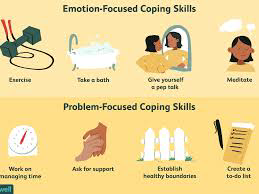 Emotion- Focused Coping Strategies
Emotion- Focused Coping Strategies
Problem- Focused Coping Strategies
UNHEALTHY COPING STRATEGIES
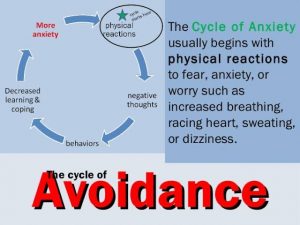 An example of this is the avoidance coping strategy. It involves ignoring or choosing not to address the stressful situation. Avoidance is more likely to increase stress and depressive episodes relative to the stressful situation. Teaching a child to ignore stressful situations rather than teaching them how to manage their emotions and dealing with the situation appropriately will make it more difficult to redirect to healthier strategies later.
An example of this is the avoidance coping strategy. It involves ignoring or choosing not to address the stressful situation. Avoidance is more likely to increase stress and depressive episodes relative to the stressful situation. Teaching a child to ignore stressful situations rather than teaching them how to manage their emotions and dealing with the situation appropriately will make it more difficult to redirect to healthier strategies later.
GENDER DIFFERENCE IN COPING STRATEGIES IN CHILDREN AND ADOLESCENTS
Gender difference in response to stressful situations is not readily noticed in children compared to adolescents and adults. Regardless of age however, stressors can be categorized into relationship, achievement, personal health, and the health of others especially loved ones.
Girls would report more symptoms, are more likely to internalize symptoms, and are more likely to seek social support. Boys are more likely to use avoidant coping methods to escape the situation, and it is more evident in adolescence compared to childhood.
CONCLUSION
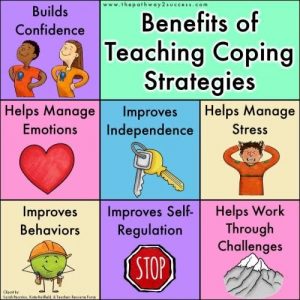 Healthy coping strategies are tools that when nurtured, help to manage the effects of stress and intense emotions effectively. Parents, guardians, and care providers should be well educated about the importance and use of healthy coping skills in children. To do this, it will be helpful to examine how you manage stress because while you should teach healthy coping strategies to children, they are more likely to learn how to manage their own stress by watching you.
Healthy coping strategies are tools that when nurtured, help to manage the effects of stress and intense emotions effectively. Parents, guardians, and care providers should be well educated about the importance and use of healthy coping skills in children. To do this, it will be helpful to examine how you manage stress because while you should teach healthy coping strategies to children, they are more likely to learn how to manage their own stress by watching you.
With teenagers, help them think back to activities that helped them handle their stress better in the past. They may not call it ‘coping’ and may deny being stressed, so try to use their own language as much as possible, encourage them to choose strategies by helping them to recognize what they already do that works.

Dr Omowunmi H. Thanni is a physician with a medical degree from Olabisi Onabanjo University Ago-Iwoye (Mb.ChB. Ogun). She is an Infant and Childhood Mental Health enthusiast who is passionate about supporting children with mental health concerns.
She is also an Early Childcare practitioner with experience observing children dealing with grief, the various psychosocial presentations, and the impact on their families. She is also a Child and Family Volunteer who serves as a healthy support system for children and families who have experienced the loss of one or both parents to terminal illnesses.
She is devoted to debunking cultural myths surrounding childhood mental health and enlightening the community on proper prevention and intervention strategies.
